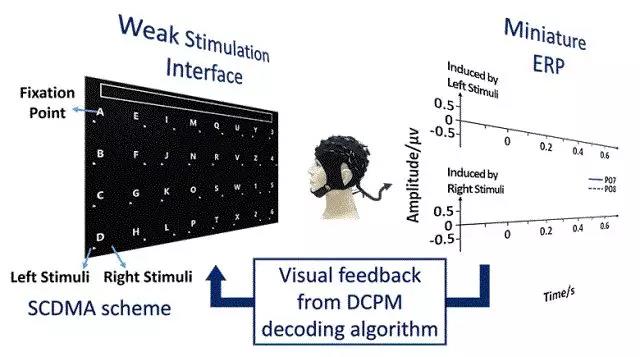Recent advances of Tianjin University neural engineering team, A Brain-Computer Interface Based on Miniature Event-Related Potentials Induced by Very Small Lateral Visual Stimuli was officially published in Transactions on Biomedical Engineering (TBME) affiliating Institute of Electrical and Electronics Engineers (IEEE) as a cover image article in May, and was selected as the “Feature Story” of IEEE Engineering in medicine and biology society (EMBS).

As the core technology for the new generation of human-computer interaction and human-machine hybrid intelligence, Brain-Computer Interfaces (BCI) intend to establish a direct access of information between the human brain and the external environment. BCIs based on the measurements of scalp electroencephalography (EEG) are considered safe, low-cost and convenient to set up and consequently have become the most frequently used research method. However, traditional BCI can only recognize distinct electroencephalography (EEG) features whose amplitudes are larger than 2μV since EEG is non-linear, unstable and with loud background noises. They are unable to identify weaker brain signals that contain more information.
Tianjin University neural engineering team developed a new BCI speller based on miniature asymmetric visual evoked potentials (aVEPs) in order to break the minimum recognition threshold for EEG signals, and facilitate more natural and efficient brain-machine interactions. Space-Code Division Multiple Access (SCDMA) and Discriminative Canonical Pattern Matching (DCPM) were designed. Differing from the traditional method, the team first introduced the spatial symmetry of EEG into the design and construction of a spatial filter. Experiments have shown that the spatial filter can effectively suppress the common-mode noise in the left and right hemispheres of the brain. This greatly improves the signal to noise ratio(SNR) and recognizable rate of the potentials associated with miniature events induced by lateral visual stimuli, enabling accurate identification and efficient application of the weakest EEG control signals (with an amplitude of approximately 0.5μV) and opening a new path for the development of coding and decoding technology.

The first author of this paper is Xu Minpeng, a young teacher of the neuro engineering team at Tianjin University, and Xiao Xiaolin, a doctoral student. Professor Mingdong is the corresponding author.
The journal of IEEE TBME, founded by the Institute of Electrical and Electronics Engineers (IEEE), affiliating with the International Society for Biomedical Engineering (EMBS), is one of the most authoritative and influential academic journals in the field. It belongs to the SJR Region I. Its H factor (SJR) ranks the 7th among 290 professional journals in the field of international biomedical engineering. The H5 factor (Google Scholar) ranks in the top 3 in the international professional journals of biomedical technology.
By Lv Xinxin
Editors: Yin Wei & Doris Harrington






